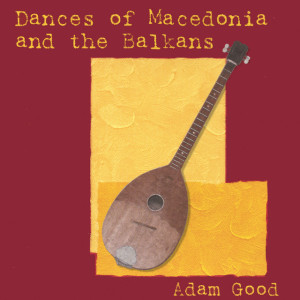 Judith Gennett wrote this review.
Judith Gennett wrote this review.
Adam Good is a Berklee-educated tambura player living in New York City. “Dedicated entirely to the Macedonian Izvorno style,” Dances of Macedonia and the Balkans is just that: a CD spotlighting Balkan dance tunes. Good includes traditional dances as well as his own compositions, which are played on the tambura, the four string lute used in Macedonia. On some of the tunes he is accompanied by a variety of village flute called a kaval and by drumming on tupan or dumbek, mostly by his bandmates in the American-Canadian group 9 Olives.
The sound of a tambura is similar to a bouzouki or even a jangly cittern. Many of the tracks, for example “Topansko,” sound like a rembetika bouzouki player high on Deep Balkan. Veering from this model, the tune of “Maleshevko” is a more western tune in a 2/4 tempo, played solo in a drone style that could be mistaken for a North American mountain dulcimer. An original composition called “Berance,” in 12/8 (or “Berance rhythm”) also has that dulcimer strummed sound, spiced with both kaval and dumbek. Two of the tracks are played on two tamburas (obviously some production magic!), including “Kopanitsa” on Bulgarian instruments, and “Veleshko.” The only vocal features Jodi Hewat from 9 Olives, pulling another production trick to harmonize with herself Bulgarian-style on “Idi Da Go Sakash Mamo/Lesno.”
Without loud attention grabbing gaidas, clarinets, and accordions, this quick dance music may seem more exotic and introspective than some Balkan music; certainly without the gimmicks, this album is much less imposing than modern Balkan music often is! But Good is good at what he does, playing quick dance tunes on tambura with an intricate style — the music goes well with wine. Dances is a sure bet for Balkan dancers out for a light, rapid chochek, or for Markos Vamvakaris or Andy Irvine enthusiasts, or anyone else, for that matter, who wants to hear good music in uneven meter!
(Folk Sounds, 2002)
